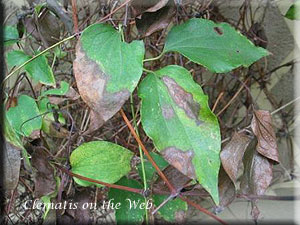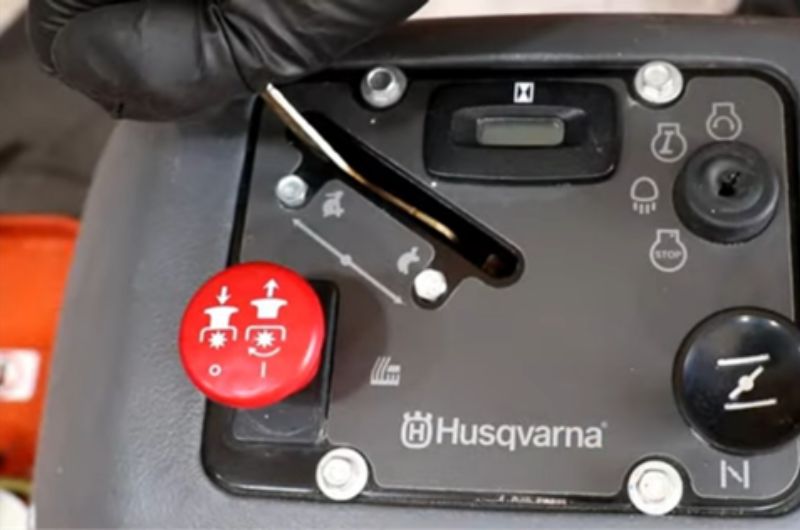Propagate a Rubber Plant: Simple Steps to Multiply Your Houseplant Collection
Rubber plants are a popular houseplant due to their attractive appearance and relatively low maintenance. Propagating a rubber plant is a simple and cost-effective way to expand your collection or share the joy of gardening with friends and family. In this article, we will explore the different methods for propagating a rubber plant and provide step-by-step instructions to ensure success.

One of the easiest methods for propagating a rubber plant is through stem cuttings. This involves taking a cutting from the parent plant and rooting it in soil or water. Another method is air layering, which involves creating a small wound on the stem of the parent plant and encouraging roots to form at the wound site. Both methods have their pros and cons, and we will discuss each in detail to help you choose the best option for your needs.
Whether you are a seasoned gardener or just starting out, propagating a rubber plant is a fun and rewarding project that can be enjoyed by all. With the right tools and techniques, you can easily create new plants to share with loved ones or add to your own collection. So, let’s get started and learn how to propagate a rubber plant!
Understanding Rubber Plant Propagation
Rubber plants (Ficus elastica) are popular houseplants known for their large, glossy leaves and easy maintenance. Propagating rubber plants is a great way to expand your collection or share them with friends and family. Here are some things to keep in mind when propagating rubber plants.
Propagation Methods
There are three main methods for propagating rubber plants: stem cuttings, air layering, and soil propagation.
Stem cuttings are the most common method and involve taking a cutting from the parent plant and rooting it in water or soil. To propagate using stem cuttings, select a healthy stem with at least two leaves and cut it at a 45-degree angle just below a leaf node. Remove the bottom leaves and dip the cut end in rooting hormone before planting it in moist soil or a container filled with water.
Air layering involves creating a small wound on a stem and encouraging it to produce roots while still attached to the parent plant. This method is more time-consuming but can produce a larger plant more quickly. To air layer a rubber plant, select a healthy stem and make a small cut just below a leaf node. Wrap the cut with moist sphagnum moss and cover it with plastic wrap. After a few weeks, roots should begin to form, and the stem can be cut and planted in soil.
Soil propagation involves taking a stem cutting and planting it directly in soil instead of water. This method can be more challenging, as the cutting may not root as easily in soil. To propagate using soil, select a healthy stem and cut it just below a leaf node. Dip the cut end in rooting hormone and plant it in a small pot filled with moist soil. Cover the pot with plastic wrap to create a humid environment and keep the soil moist until roots begin to form.
Best Time for Propagation
The best time to propagate a rubber plant is in the spring or summer when the plant is actively growing. Avoid propagating in the winter when the plant is dormant, as it may not root as easily. It’s also important to choose a healthy parent plant with no signs of disease or pests to ensure the success of the propagation.
In summary, propagating rubber plants can be a fun and rewarding way to expand your collection or share them with others. Whether using stem cuttings, air layering, or soil propagation, it’s important to choose a healthy parent plant and propagate during the growing season for the best results.
Preparing for Propagation

Selecting a Stem
Before propagating a rubber plant, it is important to select a healthy stem. Look for a stem that is at least 6 inches long and has several leaves. Make sure the stem is free of any diseases or pests. It is also important to choose a stem that is not too old, as older stems may not root as easily.
Gathering Materials
To propagate a rubber plant, you will need a few materials. These include:
- Pruning shears: To cut the stem.
- Sharp knife: To make a clean cut on the stem.
- Gloves: To protect your hands from the plant’s sap.
- Potting soil: To plant the cutting.
- Sphagnum moss: To help retain moisture.
- Perlite: To improve drainage.
- Rooting hormone: To encourage root growth.
- Pot: To plant the cutting in.
- Plastic bag or jar: To create a humid environment for the cutting.
Make sure all of your materials are clean and sterilized before use. This will help prevent the spread of disease.
Once you have gathered your materials, you are ready to proceed with propagating your rubber plant.
The Propagation Process
Cutting and Planting
To propagate a rubber plant, the first step is to take a cutting from a healthy parent plant. The cutting should be about 6 inches long and have at least two leaves. The best time to take a cutting is in the spring or summer when the plant is actively growing.
Before planting the cutting, remove the lower leaves and dip the end of the stem in rooting hormone. Then, plant the cutting in a small pot filled with moist soil. Make sure that the soil is well-draining to prevent root rot.
Creating the Right Environment
To ensure successful propagation, it is important to create the right environment for the cutting. The cutting should be placed in a warm location with indirect light. Direct sunlight can damage the delicate leaves and hinder root growth.
Maintaining high humidity levels is also crucial for the cutting to root properly. Covering the pot with a plastic bag or placing it in a humid environment can help retain moisture. However, it is important to avoid overwatering the cutting. Too much moisture can lead to fungal growth and root rot.
Regularly check the soil moisture level and water the cutting only when the top inch of soil feels dry. As the cutting begins to grow, gradually increase the amount of light it receives and reduce the humidity levels.
By following these steps, anyone can successfully propagate a rubber plant. With proper care and attention, the cutting will develop into a healthy and vibrant plant.
Aftercare and Troubleshooting

Post-Propagation Care
After propagating a rubber plant, it is important to provide proper care to ensure its growth and health. One of the first steps is to transplant the plant into a larger pot with fresh potting soil. This will give the roots room to grow and expand. The root system should be checked regularly to make sure it is healthy and not becoming root-bound.
Watering is also critical to the plant’s growth. It is important to water the plant thoroughly, but also allow the soil to dry out slightly before watering again. Overwatering can lead to root rot and other issues. The rubber plant prefers bright, indirect light and should be placed in a location that receives at least six hours of sunlight per day.
Fertilizing the plant is also important for its growth and health. A balanced fertilizer can be applied every two to four weeks during the growing season. Repotting may be necessary every two to three years to provide fresh soil and more room for the roots to grow.
Common Issues and Solutions
One common issue with rubber plants is overwatering. Signs of overwatering include yellowing leaves, wilting, and a mushy stem. To remedy this, reduce watering and make sure the soil is well-draining.
Pests such as mealybugs and spider mites can also be a problem for rubber plants. Regular maintenance and inspection can help prevent infestations, and insecticidal soap can be used to control them if necessary.
In summary, providing proper care and attention to a propagated rubber plant can lead to a healthy and thriving plant. Regular maintenance, proper watering, fertilizing, and monitoring for pests can help prevent issues and ensure the plant’s longevity.
Frequently Asked Questions
What is the best method for propagating a rubber plant?
The most effective method for propagating a rubber plant is by stem cuttings. Take a cutting that is at least 6 inches long and has a few leaves on it. Remove any leaves from the bottom half of the stem and dip the cut end in rooting hormone. Plant the cutting in a pot with well-draining soil and keep it moist. In a few weeks, roots should start to grow, and you will have a new rubber plant.
How can I encourage a bushier growth in my rubber plant?
To encourage a bushier growth in your rubber plant, prune the stem tips regularly. This will promote branching and create a fuller plant. You can also pinch back new growth to encourage branching and create a denser foliage.
What are the necessary steps to prune a rubber plant for optimal growth?
To prune a rubber plant for optimal growth, use sharp, clean pruning shears to cut the stem tips just above a node. This will promote branching and create a fuller plant. Be sure to remove any dead or yellowing leaves as well. Prune in the spring or summer when the plant is actively growing.
Is it possible to root a rubber plant cutting in water, and if so, how?
Yes, it is possible to root a rubber plant cutting in water. Take a cutting that is at least 6 inches long and has a few leaves on it. Remove any leaves from the bottom half of the stem and place the cut end in a jar of water. Keep the jar in a bright, warm spot, and change the water every few days. In a few weeks, roots should start to grow, and you will have a new rubber plant.
What is the typical rooting time for a new rubber plant cutting?
The typical rooting time for a new rubber plant cutting is around 4-6 weeks. However, this can vary depending on the plant’s growing conditions and the method of propagation.
How do I manage a rubber plant that has grown too tall?
To manage a rubber plant that has grown too tall, prune the stem tips to encourage branching and create a fuller plant. You can also stake the plant to provide support and prevent it from toppling over. If the plant is too tall to manage, consider propagating it by stem cuttings and starting a new plant.


